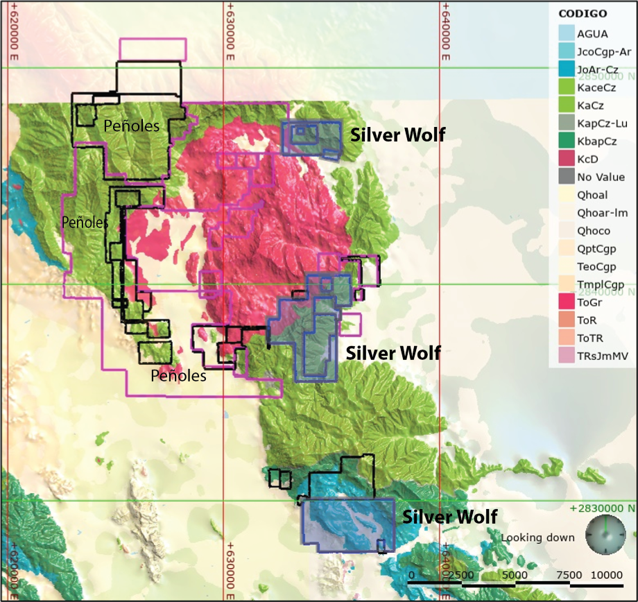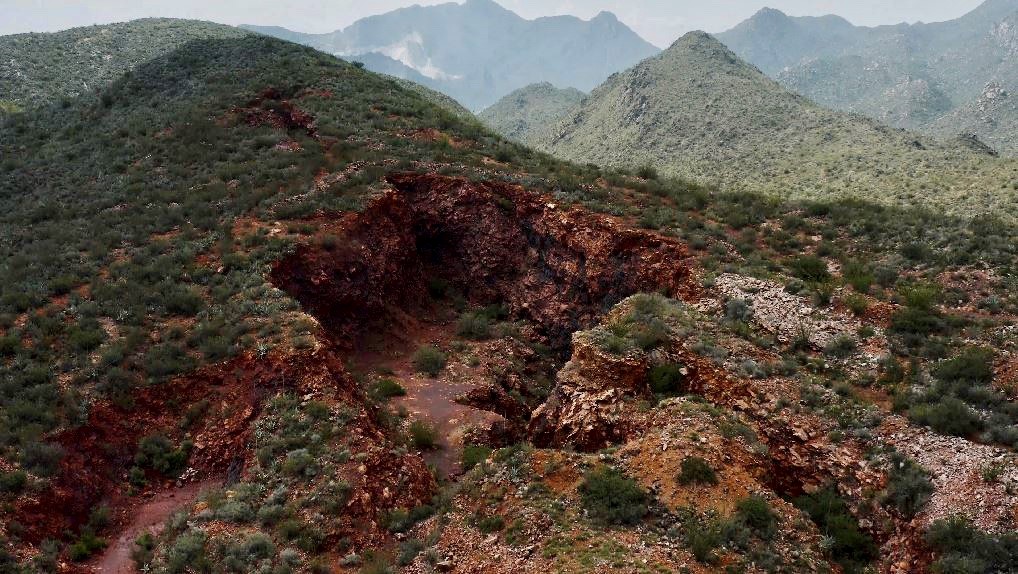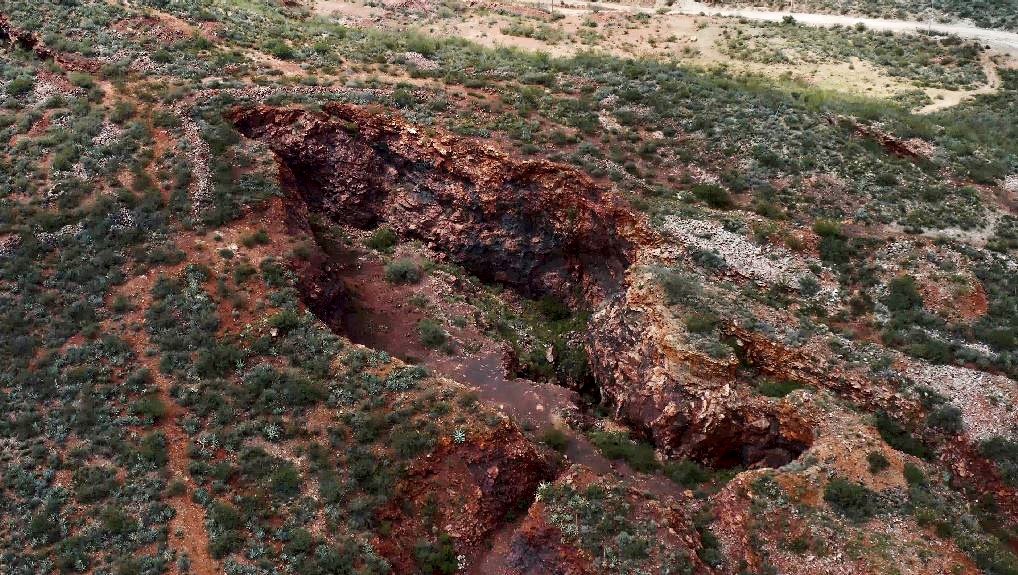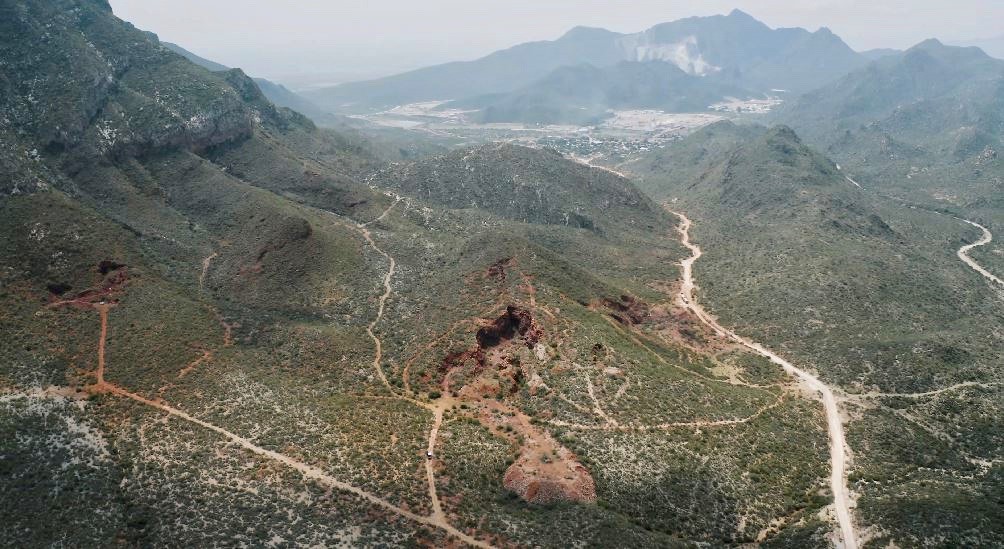Ana Maria
The Ana Maria property is located 21 kilometres (km) northwest of the City of Gómez Palacio and the adjacent City of Torreón, and 1 km north of the town of Dinamita, in the municipality of Gómez Palacio, Durango, Mexico. The claims are located in the Minitas mining district in the Guadalupe Victoria mining region. The property consists of 9 mining concessions encompassing 2,549 hectares (ha).
Minimal documentation exists regarding the history and production at Ana Maria; however, historical reporting states that La Lucha was exploited for Iron (Fe) and Manganese (Mn). Production terminated in 1943 and it was estimated to have produced 12,000 tons of material and reserves of approximately 25,000 tons.
 |
The historical estimates of production and reserves as stated above are for historical reference only and do not use the categories set out in NI 43-101. The estimates are deemed relevant from the perspective that mineralization is present on the property which may indicate the existence of other related mineral assemblages. The QP has not validated nor verified these historical estimates nor any underlying data as information and data is not available. The QP has not done sufficient work to classify the estimates and the issuer is not treating the historical estimate as current. The source of the information is the Mexican Government website and USGS (United States Geological Survey) website.
These projects are located in the North West-South East (NW-SE) striking fold-thrust belt of the Sierra Madre Oriental within a west trending prong known as the Sierras Transversales or the Monterrey-Torreón transverse system. It divides the Mesa Central, an elevated plateau to the South, from the eastern Mexican Basin and Range to the North.
The region hosts a number of carbonate replacement deposits (CRD´s) within Cretaceous limestones and dolomites. Mineralization is associated with large stocks, dykes or sills of granitoids ranging from diorites to quartz monzonites and rhyolites and inferred to be lower crustal in origin. Mineralization is present as skarns or massive sulphides and occurred during Mid-Tertiary volcanism when the aforementioned intrusions were emplaced (Megaw et al., 1988 and references therein). The deposits typically produce silver, lead, zinc and copper although some districts, such as Ojuela (~10 kilometres from Ana Maria and La Zorra), are enriched in gold relative to typical CRD´s.



